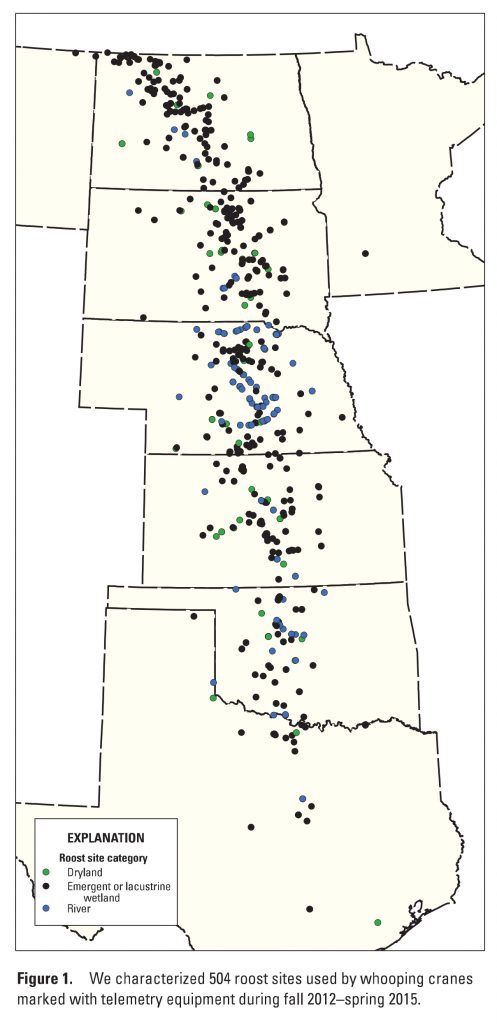
Since 2012, the Crane Trust has been an important partner along with the USGS Northern Prairie Wildlife Research Center and the Platte River Recovery and Implementation Program in a research project studying Whooping Crane migratory habitat. This project is nicknamed the ‘Stopover Project,’ because it specifically describes the locations that our wild Whooping Cranes utilize on their migrations. The Stopover Project has produced what we hope is the first of many publications utilizing this data entitled “Evaluation of Nocturnal Roost and Diurnal Sites Used by Whooping Cranes in the Great Plains, United States.” This report is the result of dozens of technicians’ and researchers’ hard work. The Crane Trust, thanks in part to funding from the Nebraska Environmental Trust, became a home base for the data collection of this project and has been intimately involved ever since.
The goal of this international multi-partner project was to track Whooping Cranes and find information desperately needed to further the conservation of the wild Whoopers in this flyway. Specifically, the Crane Trust’s goal was to find out what kind of habitat these elusive cranes chose during their incredibly long journey from southern Texas to northern Canada. Unlike the abundant Sandhill Crane, these Whoopers do not roost in huge numbers on migration, but in small groups (1-8 cranes is a normal range for the Platte River). So, beginning in 2009 researchers began placing satellite transmitters on Whooping Cranes. In total, 68 Whoopers were tracked and followed, with each individual transmitter working for about two years (but can be as long as three or four years).
Stopover Project used the tracking data to find out the exact spot a Whooping Crane spent the night and where it foraged while on migration. A pair of field technicians would wade out into the river or wetland and stand exactly where a Whooper was shortly after the crane left. Then the pair would take all sorts of measurements and map the area. This would happen each spring and fall, with multiple teams, for seven years from North Dakota down the flyway to Texas. Since the flyway extends into Canada until northern Alberta, the Canadian Wildlife Service performed the same measurements in Canada. This was time-consuming and hard work with technicians working from sun up to sundown collecting information, including hydrology, vegetation, and human impact information at the sites previously used by Whooping Cranes, to find ways to make the flyway safer for our cranes.
The work we put in will be well worth it in the coming years, as this report is just the first piece of research published from our migratory flyway. This report showed that Whooping Cranes are more wary of human disturbance than previously thought. The average distance from disturbance was around 1,650 feet or 3/10 of a mile. In Nebraska, disturbances were typically further than 525 feet or 175 yards from the roost site. We can use this information to inform future Platte River developments and are important to consider when planning for conservation. These and future findings will help guide us in protecting and maintaining habitat for the Whooping Cranes. The Whooping Crane Tracking Partnership is not over, as there is more information still to come from this project.

